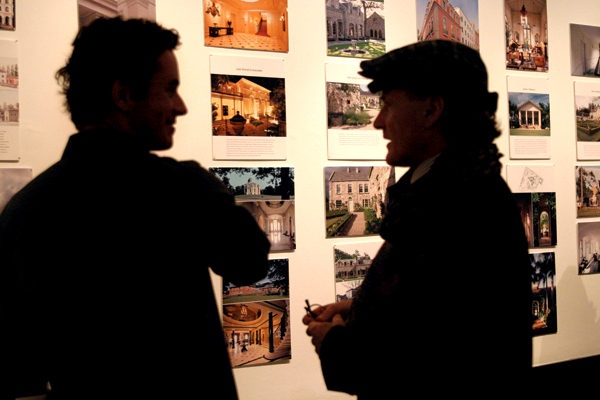
Sixteenth century architecture is taking on a modern twist.
The Jorge M. Perez Architecture Center at the School of Architecture is hosting a new exhibit entitled “New Palladians” that showcases the work of 50 modern architects who have been inspired by 16th-century Italian architect Andrea Palladio.
“The exhibit is really quite beautiful if you like classical architecture,” said Carolyn White, the manager of public relations and special projects at the School of Architecture
Palladio’s influence can be seen in the White House, Thomas Jefferson’s Monticello and the U.S. Capitol building. Key features of his architectural style include the use of symmetry, arches and columns. Most of his buildings were homes.
Lucien Steil, a renowned architect from Luxembourg and co-author of the book “New Palladians,” led a tour of the exhibit on Feb. 9. Steil owns the exhibition, which includes works by UM faculty, and frequently lends it to colleges and universities across the country.
According to Steil, Palladio’s influence on major works around the world stems from the sustainable principles he used.
Palladio was known for recycling existing buildings and materials in order to create new ones, using local materials and employing local craftsmen.
He also created an antique form of air conditioning by harvesting the cool air from the basements of his buildings and bringing it to the living areas through chimneys.
Even the familiar backyard American porch has its origin in Palladio’s porticos, which were built symmetrically on all sides so that occupants could enjoy the scenic Venetian landscape while sheltering from the heat.
“He was so famous, and his work so beautiful that architects thoughout the ages and those today are still using examples of his design,” White said.
Palladio was “a very kind man, a very humble man and a very respected man” who tried to use the “best possible solutions to make beautiful contributions to an existing context.”
Jackson Cranfield, a senior studying architecture at UM, viewed the exhibit.
“His work seems to be all about symmetry, using math and making sure the buildings are sustainable,” Cranfield said.






